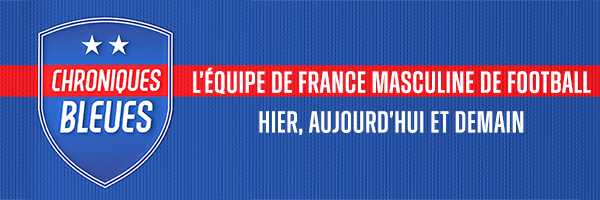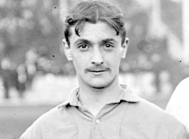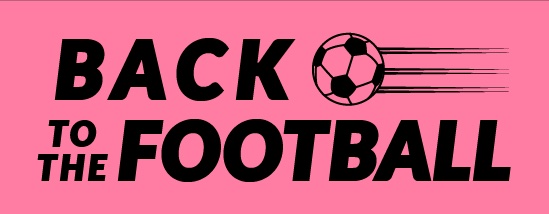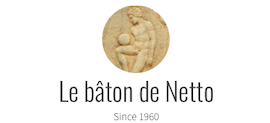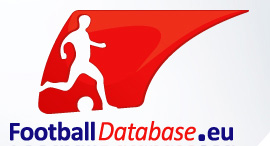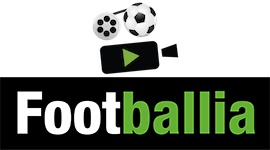Lire sur le site de Soccer Nostalgia The Soccernostalgia Interview-Part 12
Lire la version en anglais. English version here
Cet article fait partie de la série Dialogue avec Soccer Nostalgia
Soccernostalgia : Le Roumain ‘Tonton’ Stefan Kovacs a quitté son poste de sélectionneur de la France à la fin de 1975 après l’élimination de la France lors des éliminatoires de l’Euro 1976 dans un groupe avec la Belgique et l’Allemagne de l’Est. Quelle était l’ambiance du football français au niveau de l’équipe nationale ?
Bruno Colombari : L’impression de ne pas avancer. L’équipe de France est dans un tunnel depuis quinze ans, et à la fin de 1975, rien ne semble avoir avancé. Pourtant, Georges Boulogne et Stefan Kovacs ont essayé de faire franchir un palier à l’équipe nationale, le premier avec une préparation physique poussée et un gros travail défensif, le second avec son expérience de l’Ajax d’Amsterdam, tant sur le plan tactique (le football total) que sur le plan mental, domaine où les Français étaient faibles. Mais le retard accumulé et le manque de joueurs de niveau mondial (les joueurs français ne s’exportent pas, et les clubs, hormis Saint-Etienne, sont vite dépassés au niveau européen) entraînent les éliminations en série, avec aucune phase finale européenne ou mondiale disputée depuis 1966.
Autant dire que la cote de l’équipe de France est très basse, au-dessous des sélections de l’Europe de l’Est qui la battent régulièrement. A tel point qu’à l’automne 1975, certains demandent à Kovacs de prendre le plus de joueurs stéphanois possible, d’habiller les Verts en bleu en quelque sorte. Il refuse, préférant retenir des joueurs pour leurs qualités individuelles. Mais il fait débuter Dominique Rocheteau, qui a vingt ans est le grand espoir du football français.
Si Kovacs échoue, comme Boulogne avant lui, le travail de détection et de formation, ainsi que l’amélioration des sélections nationales de jeunes d’où allaient sortir de nombreux cadres de la génération Platini, donnera des résultats plus tard.
Michel Hidalgo avait été l’assistant de Kovacs, mais sans expérience comme entraineur principal. Y avait-il d’autres candidats que la presse réclamait ?
Oui, car effectivement Michel Hidalgo, 42 ans, qui n’avait joué qu’une mi-temps en équipe de France en 1962 (mais avait fait une belle carrière à Reims et Monaco), à la fin de la période de Kopa, avait plutôt le profil d’un adjoint que d’un sélectionneur. La presse avait sorti quelques noms, comme à chaque fois : Helenio Herrera, qui avait secondé Gabriel Hanot avec la sélection entre 1946 et 1948 en tant que préparateur physique, Lucien Leduc, champion de France comme entraîneur de Monaco puis de de Marseille, Albert Batteux, sans doute l’entraîneur le plus prestigieux en France à cette époque, mais dont la carrière est derrière lui, et enfin Robert Herbin, le jeune coach (36 ans) de Saint-Etienne. Mais Stefan Kovacs, qui voulait Hidalgo comme successeur, a été écouté par la FFF et son président Fernand Sastre. Dès le mois d’octobre 1975, Hidalgo était officiellement choisi, alors qu’il restait deux matchs à Kovacs qui devait retourner en Roumanie en décembre.
L’objectif affiché d’Hidalgo était d’être à la Coupe du monde 1978. Comment la presse a-t-elle évalué ses chances alors que la France avait raté la qualification en 1970 et 1974 ?
Le tirage au sort de la phase éliminatoire n’a pas aidé l’équipe de France : un groupe de trois équipes seulement (comme en 1972-73), avec un seul qualifié qui ne donne aucun droit à l’erreur. Et deux équipes moyennes (la Bulgarie et la République d’Irlande) mais capables de poser de gros problèmes aux Bleus : la Bulgarie avait éliminé les Français de la Coupe du monde en 1961, et les Irlandais les avaient battus en 1972, ce qui avait coûté aux Bleus leur place en Allemagne deux ans plus tard. Hidalgo était ambitieux, mais il savait qu’en cas de nouvel échec, il risquait sa place : si l’Irlande n’avait jamais participé à une phase finale mondiale, la Bulgarie n’avait manqué aucune des quatre dernières depuis 1962, même si elle avait toujours échoué au premier tour.
Le premier match d’Hidalgo contre la Tchécoslovaquie aurait pu être fait avec une formation différente. L’AS St-Etienne a disputé les demi-finales de la Coupe Des Champions contre PSV Eindhoven et donc Hidalgo n’a pas convoqué ses joueurs. Cela a donné l’occasion à Hidalgo de sélectionner de nombreux joueurs débutants. Pouvez-vous nous parler du processus de sélection pour ce match ?
Après sa nomination, Hidalgo a annoncé qu’il consulterait les entraîneurs de club, en citant Robert Herbin (Saint-Etienne) et Georges Peyroche (Lille). (cf Année du Football 1976). Il a constitué une équipe mixte avec deux cadres expérimentés (Marius Trésor, 25 sélections et Henri Michel, 46 sélections), deux joueurs débutants mais avec une bonne carrière en club à 27 ans (Patrice Rio, de Nantes et Robert Pintenat, de Sochaux), trois joueurs intermédiaires avec une petite expérience internationale (Jean-Paul Bertrand-Demanes, Raymond Domenech et Albert Emon) et quatre vrais débutants (Maxime Bossis, Michel Platini, Gilles Rampillon et Gérard Soler). Avant le match, il a déclaré : « La qualité du joueur passe pour moi avant l’organisation, mais je crois aux joueurs complémentaires. »
Pour constituer son équipe, il a dû tenir compte des contraintes : pas de joueurs stéphanois, et plusieurs forfaits comme Zimako, Battiston ou Huck. Il a choisi de faire appel à de nombreux Nantais, complétés par des attaquants du FC Sochaux (Soler et Pintenat) qui brille en championnat de France. Mais l’objectif du match amical contre la Tchécoslovaquie — laquelle prépare le championnat d’Europe en Yougoslavie, qu’elle va d’ailleurs remporter — est le quart de finale du championnat d’Europe Espoirs qui se jouera fin avril contre l’URSS. Un match amical de l’équipe de France A pour préparer un match de compétition des Espoirs, c’est un sens des priorités qui peut paraître étrange, mais qui a sa logique : Hidalgo va s’appuyer sur une nouvelle génération, pas sur celle issue des années Boulogne-Kovacs, à quelques exceptions près (Trésor, Michel, Bertrand-Demanes.
Juste trois jours avant ce match contre la Tchécoslovaquie, Platini était à Bucarest avec l’équipe olympique française qui se qualifiait pour les Jeux de Montréal. Pouvez-vous parler de sa sélection pour ce match et de ses débuts historiques, parce que le destin d’Hidalgo est lié à celui de Platini ?
En 2019, à l’occasion d’une exposition organisée à Paris pour le centenaire de la FFF, j’ai pu voir la lettre de convocation envoyée à l’AS Nancy-Lorraine, datée du 17 mars 1976. Il devait se présenter le 23 mars à Saint-Germain en Laye, à l’hôtel où se réunissait l’équipe de France (Clairefontaine n’existait pas encore). Michel Hidalgo avait hésité avant de le convoquer, mais c’est Platini qui a insisté. C’est ça le plus étonnant : on a l’impression que ce joueur, qui n’avait que 20 ans, est entré en équipe de France par sa volonté propre. C’est la marque des très grands joueurs, même s’ils ne le sont pas encore.
Quand il est arrivé à l’hôtel le 25 mars (le lendemain du match des Olympiques à Bucarest), Platini a été installé dans la chambre de Henri Michel, qui avait 28 ans, neuf ans de carrière internationale et qui était capitaine des Bleus. Ça a été assez difficile entre eux. C’est le début d’une histoire compliquée, qui a duré longtemps puisqu’en novembre 1988 Henri Michel, alors sélectionneur, a dû laisser sa place à Michel Platini, encore une fois.
Bien sûr que le destin de Michel Hidalgo est lié à celui de Platini, comme celui de Jacquet est lié à celui de Zidane, sans qui il n’aurait sans doute pas gagné la Coupe du monde. Mais le grand talent de Michel Hidalgo aura été de laisser une grande liberté à Platini, de prendre sa défense quand il sera contesté plus tard, notamment en 1981, et de l’écouter.
Platini avait pu participer aux JO parce qu’il était alors militaire (au bataillon de Joinville en semaine, il rejoignait Nancy le week-end) et que son contrat professionnel était suspendu. La France n’étant pas qualifiée pour le Championnat d’Europe, la participation aux JO devenait prioritaire, comme celles des Espoirs au championnat d’Europe de leur catégorie.
Il y avait une certaine satisfaction pour le match contre la Tchécoslovaquie. Platini a marqué sur un coup franc et la France a dominé pendant environ une heure. En plus de Platini, Bossis, Rio et Six ont également fait leurs débuts internationaux. Quelle est la principale leçon de ce match ?
C’est que cette équipe de France-là était sans complexe, et se moquait du statut de l’adversaire, surtout quand il n’y avait pas d’enjeu. On lui donnera deux ans plus tard le titre (moqueur) de championne du monde des matchs amicaux, mais elle avait suffisamment de qualité et d’audace pour bousculer les plus grands. Elle était capable de jouer vite, à terre et en passes courtes. Elle manquait aussi de régularité et de réalisme, et ça ce n’était pas nouveau. A 2-0, après le premier but en sélection de Platini, les Tchécoslovaques sont revenus à 2-2 très vite, en moins de dix minutes, avec une erreur de défense sur l’égalisation. Et ce qui aurait pu être une victoire de prestige se transforme en un match nul qui laisse beaucoup de regrets. Ce sera comme ça jusqu’en 1982.
Mais l’expérience a été concluante, et après le match tout le monde a envie de revoir cette équipe, dont le potentiel est évident.
Hidalgo n’a même pas pris en main son deuxième match face à la Pologne le 24 avril 1976 à Lens. Hidalgo a pris en charge les Espoirs alors qu’ils affrontaient l’Union soviétique les jours avant et après le match contre Pologne. Henri Guérin a dirigé l’équipe contre la Pologne. Pouvez-vous discuter de la décision d’Hidalgo de donner la priorité aux moins de 23 ans ? Quelle est la principale leçon à retenir de ce match contre la Pologne ?
En fait, Michel Hidalgo bâtit deux équipes de France, l’une plus jeune que l’autre. La première doit jouer deux fois en cinq jours contre l’URSS dans le cadre du championnat d’Europe Espoirs, la deuxième reçoit la Pologne à Lens en amical. Mais comme en mars, il doit faire face à deux absents qui auraient pu changer des choses : Michel Platini et Dominique Rocheteau, tous deux blessés. Trésor et Michel renforcent les Espoirs, comme le permet le règlement. En A, il y a deux débutants (les défenseurs Carlos Curbelo et Gérard Farison, qui a 32 ans) et trois joueurs d’expérience (le gardien Dominique Baratelli et les milieux de terrain Jean-Marc Guillou et Jean-Michel Larqué). Et seulement trois joueurs du match précédent : Patrice Rio, Robert Pintenat et Didier Six. Dans les remplaçants, on trouve le Lensois Farès Bousdira, d’origine algérienne. il ne sera pas rappelé, comme Farison d’ailleurs.
Cette équipe-là, qui fait pourtant un très bon match grâce à un milieu de terrain très technique, n’est pas celle sur laquelle Hidalgo va s’appuyer par la suite. C’est une équipe de France B, ou bis. Il n’y aura que trois joueurs qui iront en Argentine deux ans plus tard (Baratelli, Rio et Six) contre dix chez les Espoirs. Et certains se font des illusions, comme le capitaine Jean-Michel Larqué, qui affirme « c’est la véritable équipe de France qui se trouvait à Lens. L’espace d’un soir, j’ai été le patron. Je pense être capable d’aller plus loin dorénavant. » Il ne jouera plus que deux fois en sélection.
La première saison d’Hidalgo s’est terminée sur une déception alors qu’une équipe démotivée et sans inspiration a perdu (0-1) en Hongrie. Le match a eu lieu quelques jours après la défaite de St Etienne à Glasgow. Quelle est la principale leçon de ce match ?
C’était clairement le match de trop, comme souvent quand des rencontres amicales sont placées à la fin de la saison, alors que le championnat se termine et que les demi-finales de la Coupe de France approchent. Encore une fois, il a dû tenir compte de nombreux forfaits (six Stéphanois, ainsi que Lacombe et Zimako), il écarte Henri Michel qui a raté son match retour contre l’URSS et il apprend que l’UEFA interdit de sélectionner Carlos Curbelo en compétition car il a déjà joué pour l’Uruguay. Il met Platini en position de milieu défensif aux côtés de Larqué et Guillou, sans grand succès évidemment. Quand ce dernier sort, Platini reprend sa place de meneur de jeu, mais les Hongrois ont déjà marqué. « Ce Hongrie-France est vraiment un match qui ne nous a rien apporté », dira Hidalgo, déçu. « Un élan existe, incontestable, dont nous n’avons pas encore pu tirer tout le parti. »
Quel bilan faites-vous de la première saison d’Hidalgo après trois (vraiment deux) matches aux commandes ?
Impossible de faire un bilan sur une période aussi courte, sans match de compétition, et à une période (fin de saison) où les joueurs sont très mobilisés par des objectifs à atteindre avec leur club. Mais ces trois matchs-là, dont un contre le futur champion d’Europe (la Tchécoslovaquie) et un autre contre le troisième de la dernière Coupe du monde (la Pologne), lui ont permis de tester de nombreux joueurs (24, dont cinq qu’on ne reverra plus par la suite), de voir ceux sur lesquels il peut compter dans l’avenir (cinq joueurs de Séville en 1982 sont déjà là) et d’observer les limites de l’équipe de France. Ça lui sera très utile avant de jouer les matchs décisifs de l’automne en Bulgarie et contre la République d’Irlande. C’est là aussi où on mesure l’importance des matchs amicaux qui disparaissent aujourd’hui.
On peut voir aussi cette période comme un condensé des huit ans à venir de la période Hidalgo : une équipe de France conquérante et ambitieuse à domicile (elle ne perdra que quatre matchs à la maison, sur 41 joués, et uniquement entre mai 1981 et août 1982) mais crispée à l’extérieur et avec une défense friable, notamment en raison de gardiens peu sûr, du moins jusqu’à l’arrivée de Joël Bats en 1983.
Il y avait pourtant un air de renaissance avec L’Epopée des Verts en Europe, la révélation de Platini et Le Progrès des Espoirs qui formeront l’ossature de la nouvelle Equipe de France. Interrogé à ce sujet dans les années 1990, Platini lui-même pensait que L’Epopée des Verts en était plus importante dans cette renaissance que ses débuts. Qu’en pensez-vous ?
Oui, il est certain qu’en 1976, les amateurs de foot en France suivent beaucoup plus Saint-Etienne que l’équipe de France, comme en 1991 ils suivront beaucoup plus l’OM. Saint-Etienne a joué une demi-finale de Coupe d’Europe des champions en 1975 et une finale en 1976, battue à chaque fois par le Bayern Munich qui alimentait lui-même l’équipe de RFA avec de nombreux internationaux. Autrement dit, la probabilité de voir un club français remporter la Coupe d’Europe était beaucoup plus élevée que de voir l’équipe de France gagner un championnat d’Europe ou une Coupe du monde. Lopez, Janvion, Rocheteau ou Bathenay allaient faire une belle carrière en Bleu aux côté de Platini, et lui-même allait rejoindre Saint-Etienne entre 1979 et 1982. L’expérience européenne acquise par les Stéphanois a servi en équipe de France, a prouvé que les joueurs français avaient le niveau international, même si avec les Bleus ça se traduira dans un premier temps par des victoires de prestige en match amical.

